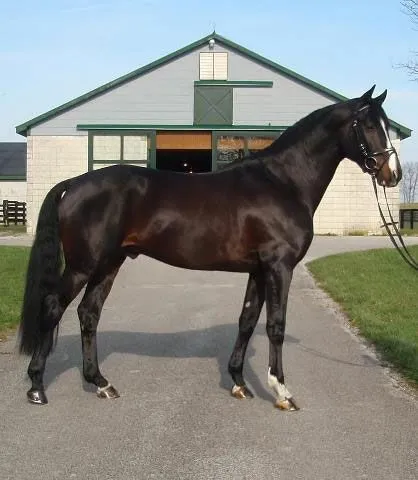Zweibrücker Horses are a rare breed of horse that is known for its athleticism and strength.
They are bred in the Rhineland-Palatinate region of Germany, and are used for a variety of purposes.
If you’re interested in learning more about these horses, or in owning one yourself, read on!
This guide will provide you with everything you need to know about Zweibrücker Horses.
Zweibrücker Breed Info
Here are some of the key things you need to know about the Zweibrücker:
| Height (size) | 16.0 – 17.0 hands high |
| Colors | n/a |
| Country of Origin | Germany |
| Common Uses | Dressage, show jumping, eventing, combined driving |
Zweibrücker Facts & Information (Breed Profile)
One of the smallest state-run facilities, the Zweibrücker or Zweibrücken Horse is bred in a state-owned stud farm in Zweibrücken, Germany.
Founded in the middle of the 18th century, the stud was home to animals of noble bearing.
Breeding stock came from nearby German farms, and there was also some Spanish, Anglo-Norman, Thoroughbred, and Arabian influence.
By the year 1900, the Principal Stud of Zweibrücken consisted of more than 250 heads of breeding stock and young horses, 74 of which were stallions that belonged to the state.
The first half of the 20th century saw an increase in demand for a heavier all-purpose farm horse, which was widely employed in the First World War to pull artillery wagons.
As a result of this need, breeding procedures were altered, and the blood of heavier Warmbloods such as the Oldenburger was introduced in place of the elegant riding horses.
During World War II, almost a quarter of the 58 stallions standing at Zweibrücken were draft horses, and also in 1960 Zweibrücken lost the status of Principal Stud.
However, in the late 20th century, as the market for athletic riding horses grew, Trakehners replaced the draft horse stallions, and from 1966 – 1976, Trakehner stallions comprised half the stallion roster.
As time went on, stallions of Hanoverian and Holsteiner lineages were crossbred with the Trakehners, which sped up the process of producing a Warmblood riding horse.
In comparison to the majority of State Studs in Germany, Zweibrücken only had hefty Warmblood stallions for a limited time, and that is not strange because since its creation, the region’s main focus has been an elegant riding horse.
Currently, many of the stallion depots and outposts are located in France, while others were bought by other organizations.
Stallion parades and a month-long stallion performance test for the regional breeding organization are both held on the grounds of the state stud.
In the same manner as the breeding of other German Warmbloods, the breeding of Zweibrücken is defined by rigorous inspection standards.
If you’re interested in learning more about this fascinating breed, keep reading!
Alternative Names
“Zweibrücker”
Temperament/Personality
n/a
Physical Characteristics
Zweibrücker is known for its refined appearance, big frame, good conformation, and powerful, elastic gaits.
Colors
n/a
Height (size)
16.0 – 17.0 hands high
Stallions
n/a
Mares
n/a
Weight
Average 1,300 lbs (590 kg)
Blood Type
Warm
Common Uses
Dressage, show jumping, eventing, combined driving
Health
n/a
Popular Traits
n/a
Feeding/Diet
n/a
Country of Origin
Germany
Ancestors
Local stock, Andalusian, Anglo-Norman, Thoroughbred, Arabian, later: Trakehner, Hanoverian, Holsteiner
